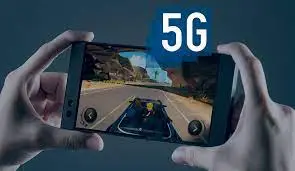Mobile gaming has evolved significantly over the years, thanks to advancements in technology. With the introduction of 5G and edge computing, the landscape of mobile gaming is undergoing a transformative shift. In this blog, we will explore how these technologies are enhancing the mobile gaming experience and shaping the future of gaming.
Understanding 5G and Edge Computing
Before diving into the impact of 5G and edge computing on mobile gaming, it's essential to understand what these technologies entail. 5G mobile gaming refers to gaming experiences powered by fifth-generation cellular networks, offering higher speeds, lower latency, and greater capacity compared to previous generations. On the other hand, edge computing gaming involves processing data closer to the end-user, reducing latency and enhancing real-time responsiveness in gaming applications.

Benefits of 5G and Edge Computing for Mobile Gaming
- 5G gaming performance: With 5G networks, gamers can enjoy ultra-fast download speeds and low latency, resulting in smoother gameplay and reduced lag.
- Future of mobile gaming technology: 5G and edge computing pave the way for innovative gaming experiences, such as augmented reality (AR) and virtual reality (VR) gaming, which were previously constrained by network limitations.
- Cloud gaming with 5G and edge computing: The combination of 5G and edge computing enables cloud gaming platforms to deliver high-quality gaming experiences on mobile devices without the need for expensive hardware.
- Edge computing for real-time gaming: By processing gaming data at the edge of the network, edge computing minimizes latency, allowing for real-time interaction and responsiveness in multiplayer gaming scenarios.

Exploring the Impact of 5G and Edge Computing on Mobile Gaming
- Improved gaming experiences: With 5G's high speeds and low latency, gamers can enjoy smoother gameplay, faster load times, and more immersive graphics.
- Real-time multiplayer gaming: Edge computing reduces latency by processing gaming data closer to the user, enabling real-time multiplayer gaming experiences without delays or interruptions.
- Innovative gaming content: The combination of 5G and edge computing opens doors to new gaming content and experiences, such as AR and VR gaming, interactive streaming, and cloud-based gaming services.
- Expanded gaming accessibility: 5G networks and edge computing technologies make gaming accessible to a broader audience by overcoming geographical constraints and device limitations.
Comparison with Traditional Gaming
Traditional gaming experiences have long been characterized by limitations in performance, latency, and overall gameplay quality. However, with the emergence of 5G and edge computing technologies, the mobile gaming experience has been revolutionized. These technologies offer significant improvements in performance, latency, and overall gameplay quality, making them essential for the future of mobile gaming.
Improved gaming experiences
One of the most noticeable differences between traditional gaming and gaming enabled by 5G and edge computing is the performance. Traditional gaming setups often rely on local hardware resources, such as gaming consoles or PCs, which can limit the graphical fidelity and processing power available to gamers. In contrast, 5G and edge computing allow for the offloading of computational tasks to cloud servers located closer to the user, enabling high-quality graphics, complex simulations, and immersive gaming experiences previously unattainable on mobile devices.
Reduced latency
Latency, or the delay between input commands and their corresponding actions in the game, has long been a challenge for traditional gaming. High latency can lead to frustrating delays in response times, impacting gameplay precision and immersion. However, 5G and edge computing technologies significantly reduce latency by processing gaming data closer to the user at the network edge. By minimizing the distance that data needs to travel between the gamer's device and the server, latency is greatly reduced, resulting in near-instantaneous response times and a more responsive gaming experience.
Overall gameplay quality
The combination of improved performance and reduced latency afforded by 5G and edge computing technologies contributes to an overall enhancement in gameplay quality. Gamers can enjoy smoother frame rates, higher resolutions, and more dynamic environments, all of which contribute to a more immersive gaming experience.
Additionally, the increased processing power available through cloud-based gaming services allows for more sophisticated artificial intelligence, realistic physics simulations, and complex game mechanics, further enriching the depth and complexity of modern mobile games. As a result, gamers can engage in more captivating storytelling, compete in more challenging gameplay scenarios, and explore more expansive virtual worlds, fostering greater player engagement and enjoyment.
In conclusion, the comparison between traditional gaming experiences and those enabled by 5G and edge computing underscores the transformative impact of these technologies on the future of mobile gaming. With significant improvements in performance, latency, and overall gameplay quality, 5G and edge computing are essential drivers of innovation in the gaming industry, paving the way for a new era of immersive and engaging gaming experiences on mobile devices.
